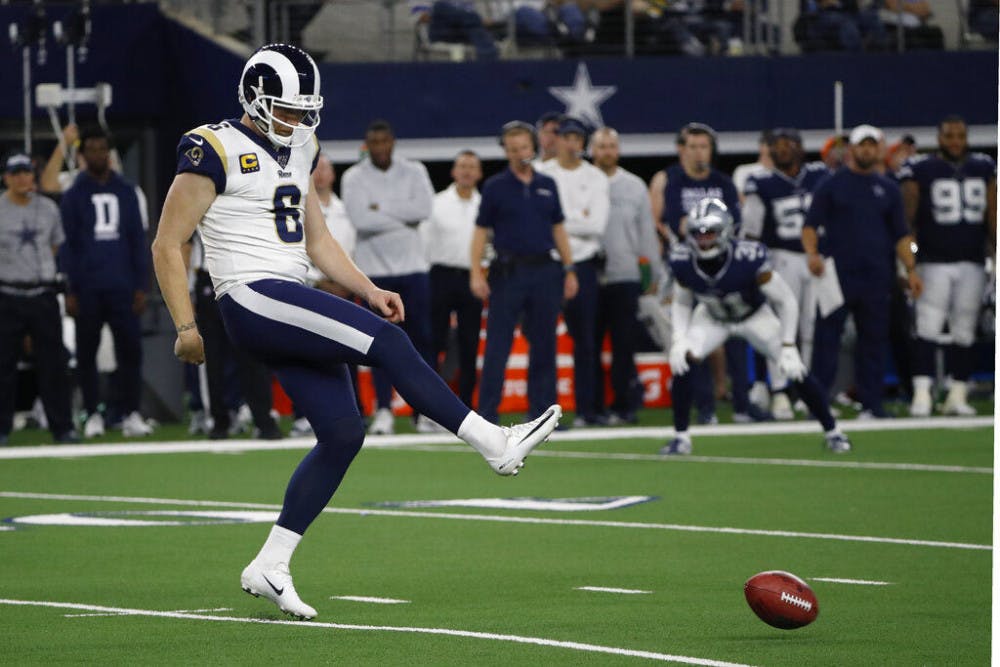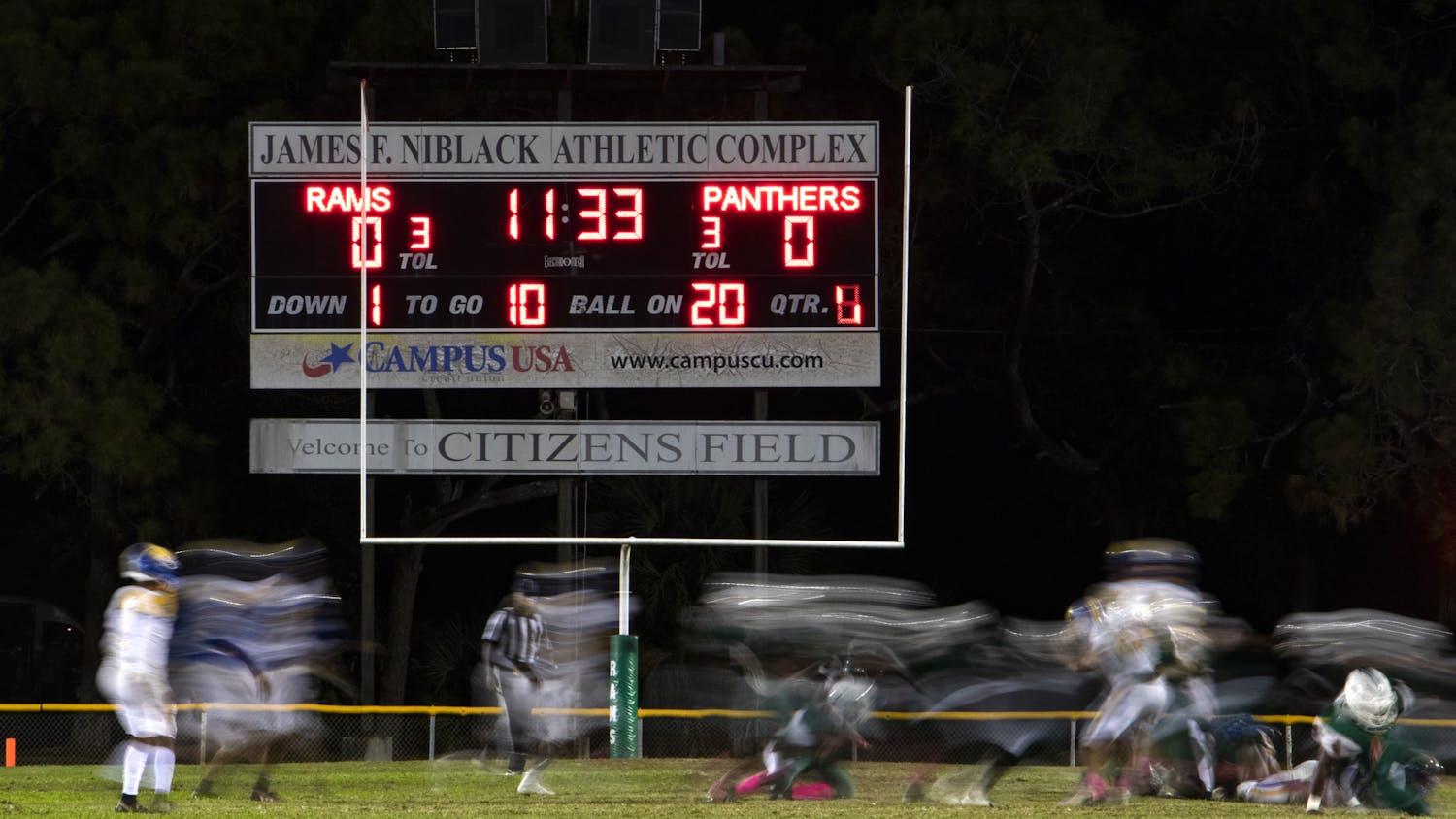The onside kick must stay as-is
By River Wells
Think of your favorite onside kick. You probably can’t think of many.
Is it the Saints recovering one in Super Bowl XLIV? Or maybe Brandon Bostick letting the football bounce off his helmet in the 2015 NFC Championship Game?
From 1992 to 2017, 21.2 percent of all onside kicks were recovered by the kicking team. The onside kick is seen as a last-ditch effort desperately hoping for a miracle, and it had that reputation even before the NFL eliminated the running start from kickoffs entirely in 2018.
I think it should stay that way.
The NFL is proposing to replace the onside kick with a 4th-and-15 from the kicking team’s own 25-yard line. This isn’t an entirely new idea—the Denver Broncos proposed a much stricter alternative that was voted down by owners last year, and the now-defunct Alliance of American Football had an option for a 4th-and-12 from the 28-yard line if a team was down by more than 17 points in the last five minutes of the game.
Let’s look at the numbers. In 2018, right after the removal of the running start, teams recovered just 6.6 percent of onside kicks. That number shot up to 12.7 percent last year, but there’s a bit of an outlier: Falcons kicker Younghoe Koo was able to provide Atlanta with two successful onside kicks in a single game against the Saints in Week 13.
Meanwhile, according to NFL Research, there were seven cases where a team was faced with a 4th-and-15 last year. Teams converted on them twice, which is a 28.6 percent chance of success. The percentage since 2015 is just a bit lower, with seven out of 29 being converted (around 24 percent). That’s a pretty big jump from the onside kick percentage, and there would certainly be far more teams keeping possession late-game if this new rule was passed.
But I’m not a big fan. I love the prospect of an onside kick teetering on the brink of hopelessness because it makes it that much sweeter when one gets recovered. The spark of life that shoots through a team when it recovers its own kick is a feeling unlike any other.
But putting Patrick Mahomes behind an offensive line to get the ball back? Aaron Rodgers? These players are notorious for their ability in the clutch, and quarterbacks hold domain over an “it” factor that’s hard for a kicker to match.
A tired defense could be further abused with the new rule, which wouldn’t happen with a kicking team. Those exhausted defenses could be more apt to commit penalties like tackling with the facemask or pass interference that would all but gift a team with possession close to midfield. It gives teams hope, but far more than I am comfortable with.
The onside kick is a last-ditch effort that becomes legendary on success. If the NFL’s new proposal is passed, that legendary feeling will lean far toward ordinary.
Follow River on Twitter @riverhwells and contact him at rwells@alligator.org
***
Let’s boot the kickoff
By Declan Walsh
Football is admittedly a very complicated sport.
Pigskins have flown across my TV screen just about every weekend for the last 15 years, and I’m still trying to figure the game out. ESPN has devoted articles to searching the rulebook and predicting the strange and confusing decisions to come, and studios enlist “rules experts” to explain plays that baffle the broadcasters. For those not born into football culture, it is mystifying.
But amidst the sport’s quirky rules exists an underlying uniformity. Every play sees the two teams line up at scrimmage and will end in either a run, pass, punt or field goal. Every play starts with the ball being snapped by the center, every play has a tackle box and neutral zone, every play has an offense and a defense.
Except the kickoff.
Historically, the kickoff makes a lot of sense. Football formed as a derivative of rugby, and rugby uses the kickoff to close scoring drives and begin each half. However, while rugby kickoffs use a drop kick, a common technique in the sport, football-style kickoffs make no sense under the purview of the sport. Kickoffs possess none of the traits outlined previously and require a foreign instrument for the play. It’s just not football.
This poor design is doubly problematic when you consider that the kickoff serves as football’s most dangerous play. It sees the highest rate of concussions by a significant margin and has resulted in many horrific injuries.
One of these injuries was sustained by defensive tackle Eric LeGrand, who was paralyzed from the neck down while covering a kickoff. His coach at the time, Greg Schiano, developed an alternative for kickoffs that addresses many of the concerns raised by kickoff defenders.
Abolishing the kickoff would do away with the onside kick, which would have a negative impact on the sport’s entertainment value. In 2015, about 75% of NFL games were decided by 14 points or fewer. That two-score game remains watchable and exciting through the last few minutes only because an onside kick offers the losing team just enough of a lifeline to get back into the game.
Schiano’s solution was to return possession to the scoring team, but face them with 4th and 15 at its own 30. Under normal circumstances, a team would punt in this situation, effectively replacing the kickoff but with three main improvements.
First, punt returns are cooler. Kickoff returns are almost always just running through a seam in the kick coverage, punt returns showcase more of the jukes and spins that many associate with returns.
Secondly, punt returns are much safer. Instead of the two teams running at each other at full speed, they meet at the line and the return team runs backward in coverage, severely reducing the force of impact upon collision.
Third, it’s an actual football play with a line of scrimmage and chains.
This also resolves the onside kick predicament. If a team is down in a late-game situation or has an exceptionally risky coach, it has the opportunity to set up a play and try to get a first down. The odds of converting a 4th and 15 are around 24%, nearly four times the odds of recovering an expected onside kick. I would increase the yards to gain to more closely resemble the odds of an onside kick, but it’s a minor detail that can be sorted easily.
I understand that this position goes against more than 100 years of football tradition, and I’d imagine the insights of Greg Schiano may no longer be appreciated by many Floridians. But doing away with a hazardous and illogical aspect of the game seems like a no-brainer to me. This change would make the game safer for the players and more exciting for the fans. It just makes sense.
Follow Declan on Twitter @dawalsh_UF and contact him at dwalsh@alligator.org.
FILE - In this Dec. 15, 2019 file photo Los Angeles Rams punter Johnny Hekker kicks an onside kick during an NFL football game against the Dallas Cowboys in Arlington, Texas. The NFL is considering adding a “booth umpire” and a senior technology advisor to the referee to assist the officiating crew. The league also is looking at other rules changes, including an alternative to the onside kick. NFL clubs received a list of potential rules changes on Thursday, May 21, 2020. (AP Photo/Roger Steinman, file)






